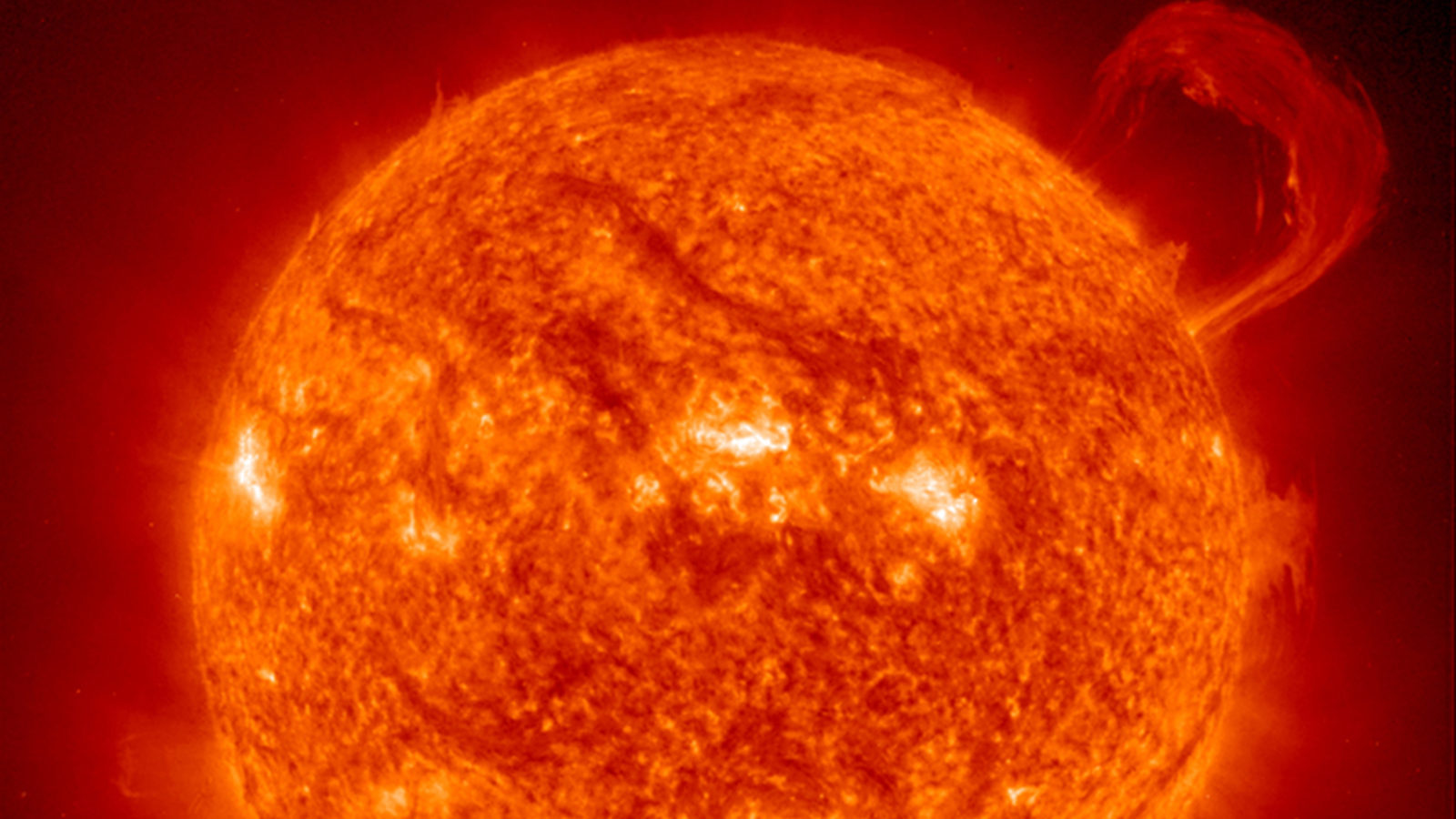The
Sun: The Basics
The sun is a star, a hot ball of glowing
gases at the heart of our solar system.
Its influence extends far beyond the
orbits of distant Neptune and Pluto.
Without the sun's intense energy and
heat, there would be no life on Earth.
And though it is special to us, there
are billions of stars like our sun scattered
across the Milky Way galaxy.
Rotation
period
At
equator : About 27 days.
At poles : About 36 days.
Surface
temperature
10,000 degrees Fahrenheit
Composition
Hydrogen, helium.
Read
& know more
Sun
mass
The Sun is the center of our
solar system and makes up 99.8 percent
of the mass of the entire solar system.
Interesting
facts
If the Sun were as tall as a typical
front door, Earth would be about the
size of a nickel.
At the equator, the Sun spins once about
every 25 days, but at its poles the
Sun rotates once on its axis every 35
Earth days.
As
a star, the Sun is a ball of gas (92.1
percent hydrogen and 7.8 percent helium)
held together by its own gravity.
The Sun does not have any rings.
Without
the Sun's intense energy, there would
be no life on Earth.
But
orbited by eight planets, at least five
dwarf planets, tens of thousands of
asteroids, and up to three trillion
comets and icy bodies.
The
Sun’s visible surface sometimes has
dark sunspots, which are areas of intense
magnetic activity that can lead to solar
explosions.
Read
& know more
The
sun has an age of 4.5 billion years
and is 100 million times as large as
Earth. Yet it is quite a mediocre star
on the universe scale. For humans, the
sun is invaluable.
The sun consists of hot hydrogen and
helium. At the heart of the sun huge
amounts of energy are released. Even
the smallest differences in the Earth's
distance to the Sun mean significant
temperature differences. Without the
Sun the Earth would be lifeless.
Read
more
Sun
first seen by people on earth
New
Zealand is country where sun rise is
seen first in the world on New Year’s
Day.
The
Kamchatka time of Russia is one hour
behind the Kiritimati Time of Kiribati.
However, because of the high latitude,
some areas in Kamchatka sees the sunrise
earlier than Kiribati during May 16
to Sept 26.
Kiribati,
Russia & New Zealand are countries
where sun rise is first seen (We know
that scientifically, sun doesnt rise,
it is always there 365 or 366 days and
night 24 hours)
Usually, sun rise is first seen
in Kiritimati of Kiribati country
Chatham Island, New Zealand also sees
the sunrise first between the period
of November 14 and January 30.
Kamchatka, Russia sees the first sunrise
in the world during some periods in
summer, ideally May 16 to Sept 26.
Uelen, east-most settlement in Russia
the sun rises earliest in the world
during certain periods of summer.
Kamchatka time is one hour behind Kiritimati
Time of Kiribati but on May 16 the sun
starts rising earlier in Uelen, Russia
than in Kiritimati.
Uelen sees the world’s first sunrise
first from May 16 to June 5.
On June 6, however, the sun rises at
11:58 pm as the daytime gets longer
and from June 10 to July 1 they have
white nights. The sun rises again on
July 2 but before midnight and on July
5 the sun rises at 00:01 am –only one
minute after the date changes. Uelen
sees the world’s first sunrise again
from July 5 till Sept 26 (5:15 am).
After this date the Kiribati sees the
sunrise earlier than Uelen does. (For
detailed information, see the source)
Samoa is also part of the country which
on some days sees sun rise first (But
we have no guranteed information)
For
details, contact Datacentre
|

